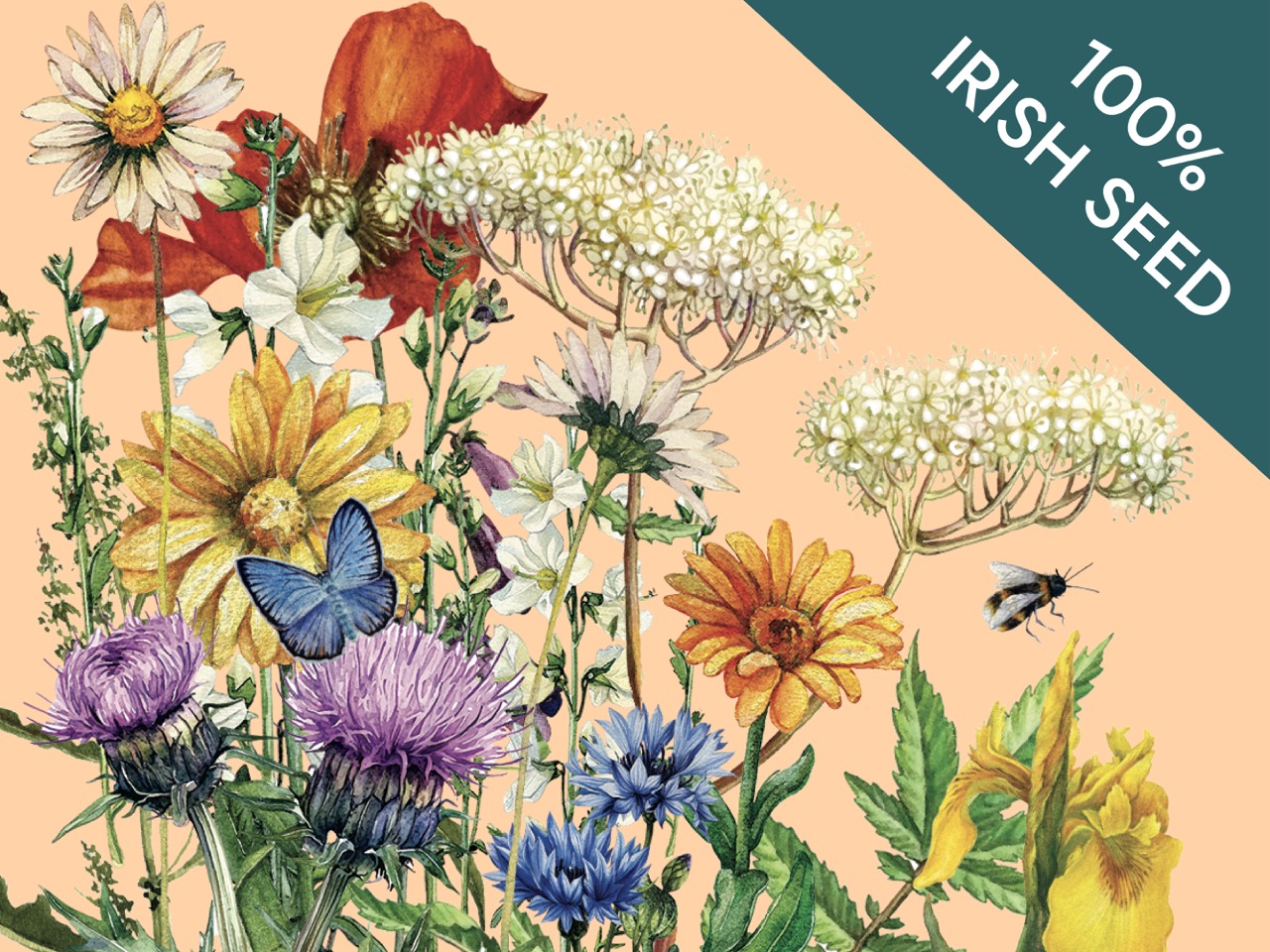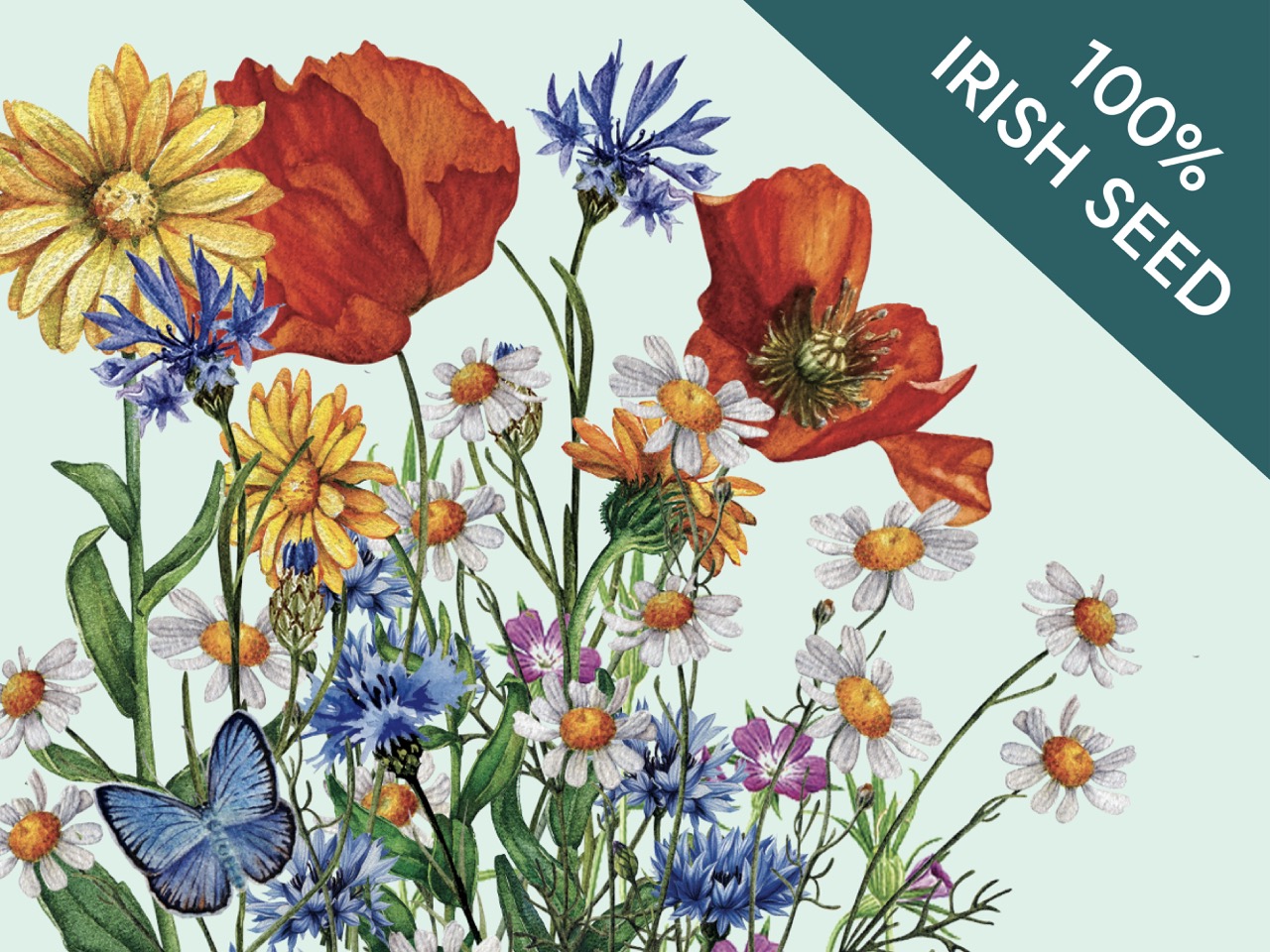Description
Flowering from May to August, this mix will attract butterflies and pollinating insects in abundance with native species such as Ox-Eye Daisy, Mallow and Selfheal. It features annual, biennial and perennial wildflowers.
The mix requires a fair bit of maintenance, as the idea is to eventually maintain it as a low-growing meadow or floral lawn. See Instructions tab for detailed info on preparation and maintenance.
Species List:
Birdsfoot Trefoill, Black Meddick, Burnet Saxifrage, Century, Wild Chamomile, Cowslip, Eyebright, Meadow Buttercup, Marjoram, Red Bartsia, Mallow, Forget-me-not, Broadleaf Plantain, Kidney Vetch, Lady's Bedstraw, Ox-eye Daisy, Red Clover, Ribwort Plantain, Rough Hawksbit, St Johnswort, Wild Carrot, Sorrel, Yarrow, Quaking Grass, Lady's Smock, White Bedstraw, Selfheal, Smooth Hawksbit, Corn Marigold, Corn Poppy, Cornflower, Corncockle, Scentless Mayweed
Mixture Specifications:
Origin: Native Irish Origin, Wildflower Seed Mixture.
pH range: Suits all soil, bar very wet.
Aspect: Sunny
Life Cycle: Contains Annuals, Biennials and Perennials.
Height Range after 2nd year: 10cm - 80cm (first year will be taller)
Flowering Period: May to August.
Fertility Range: Will grow on any soil; the less fertile the soil, the less cutting will be required.
Wintergreen: Moderate
Total number of seeds per gram: 1280
Instructions
Site preparation:
Aim for a totally weed free soil. if the soil contains weeds, a 'hort' or paper layer covered with 5cm of enriched coarse sand should smother normal weeds.
Sand can also be incorporated into some areas of the soil to increase drainage.
The gardeners aim is to create well-drained conditions, as per a normal lawn.
You can sow other low-maintenance species such as dwarf bulbs and low-growing perennials, which are ideal for introducing into the short cut lawn, as well as our plants from our wider range.
Seed Sowing Rates:
Normal sowing rates: 1 to 1.5 grams per metre.
Grass seed or nurse crop requirement:
Nurse Crop: A nurse crop is not required
Maintenance
After the first year's annual flowers, keep the meadow cut every 4 to 6 to 8 weeks, depending on how fertile your soil is.
In the first year, do not cut until August or September (or later) to allow the annuals to finish flowering. At this point 'strim' away the taller annual growth. In year two, cut to maintain as a lawn.
By year 3 use a mower (not a mulch mower) to keep the meadow short. The aim is to allow three main flowering periods: from May to early June, from late June to July and again in Autumn. Between each flowering phase the lawn will need to be cut.
Floral lawns will require cutting every 4 to 6 weeks when growth reaches 10cm, or just before a flush of flower is finished. You should remove the cuttings.
Set the mower to the highest setting, cut and then re-cut, with the mower setting down to about 10cm.
The aim is to keep the flora short and to encourage it to flower with regular cutting.
If using Mulching Mowers, rake the soil very well at the end of the season to remove all the dead debris.
Floral lawns should occasionally be allowed to flower every three years, with the aim of allowing the species to set fresh seed. This will require leaving a 6-8 week gap with no cutting in late May to July for spring species; and sometimes in July to August for later flowering species.
Weeding:
Vigorous grasses should be spot weeded. White clover (if supplied in the mixture) - while welcome in very large lawn areas if regularly mown - should really be controlled in small areas.






